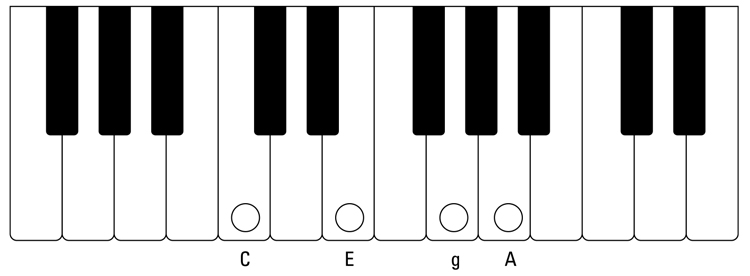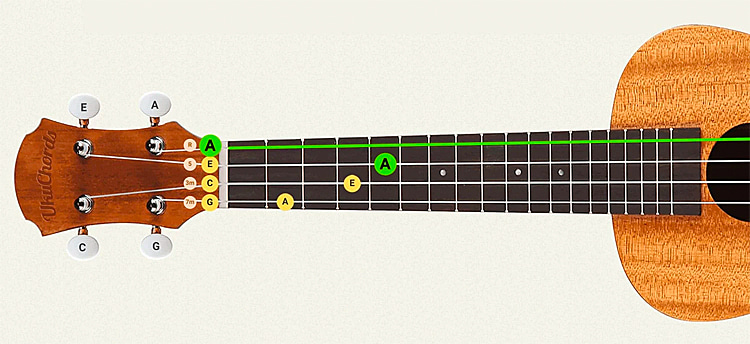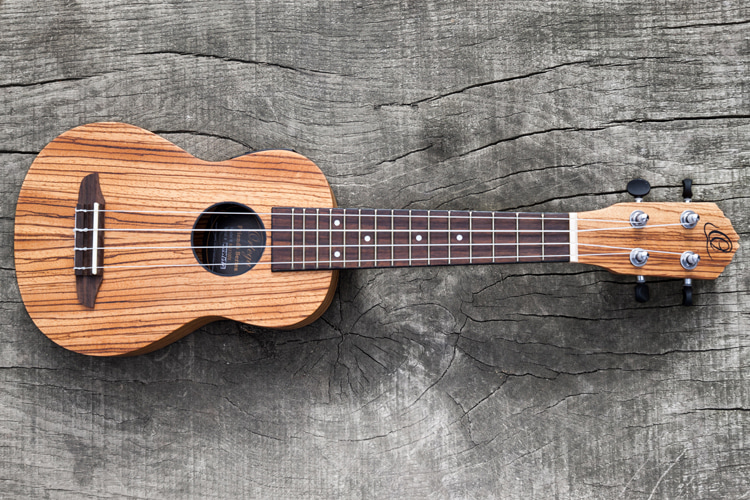The ukulele is one of the most magical string instruments. Learn how to tune up the famous Hawaiian concert, soprano, and tenor ukulele.
The sound of the ukulele is immediately noticeable.
But there's nothing worse than listening to a beautiful, engaging song played out of tune.
You don't even need to be a music virtuoso or an experienced ukulele player to notice that there's something wrong. It just sounds terrible.
Also, if you're about to learn how to play this exotic instrument, tuning is one of the most basic skills you need to master.
So, tuning a ukulele is the first thing a person should do before playing a song. Otherwise, instead of a pleasant sound, you get an acoustic nightmare.
String instruments are susceptible to subtle air temperature changes, high humidity, dry environments, and even air pressure changes.
Also, every time you change your strings, you'll need to tune them.
Remember that most nylon strings should be replaced every 16 months to keep the integrity of your instrument's sound.
New ukulele strings slip out of tune quickly, and when they are put on, they stretch a little and lose their tuning.
Believe it or not, they need two weeks or more before they bed in, i.e., stop stretching and stay in tune longer.
"You can speed this bedding‐in process up by stretching the strings," notes Alistair Wood, author of "Ukulele for Dummies."
"Tune your ukulele, pull one string away from the soundhole, and gently tug it a few times. Play the string again, and it'll probably be out of tune.
"Tune it up and repeat the process."
"The string should be less out of tune each time you try it. Do this with each string, and your ukulele should stay in tune better."

Tuning Methods
The Western music chromatic scale has seven main notes - C, D, E, F, G, A, and B, plus five flats and equivalent sharps in between.
There are four fundamental types of standard ukuleles: soprano, concert, tenor, and baritone. They all differ in size.
However, the baritone ukulele is tuned differently - lower than the other three types - and equally to the top four strings of a classical guitar (E-B-G-D).
There are several ways of tuning your soprano, concert, or tenor ukulele.
You can use smartphone tuning apps, an online tuner, a chromatic tuner, or an electronic clip-on tuner.
These useful tools assess the sound waves and frequencies and help you visually determine if the string is sharp (too high in pitch) or flat (too low in pitch).
If you don't have any of the above options, try using a piano or tuning the instrument to an audio track.
You can also use a guitar to tune the uke. The G, C, E, and A ukulele strings have corresponding notes on the guitar. Here are they:
- G: Third fret on the high E guitar string;
- C: First fret on the B guitar string;
- E: Open high E guitar string;
- A: Fifth fret on the high E guitar string;
These methods are not as accurate, but they can definitely make your ukulele playable.
In the end, the goal is to adjust the peg in the headstock so that the arrow/needle featured in the tuner stays perfectly centered and steady on the dial.
The strings should be in tune with each other and, eventually, in tune with other instruments.
You can always tune a ukulele by ear, but it requires developing ear training and tonal memory or the ability to re-create a musical note without a reference tone.
The perfect pitch, also known as absolute pitch, is a rare skill, though.

Reentrant Tuning a Standard Ukulele
Every standard ukulele has four strings. So, the soprano, concert, and tenor ukulele - the most common ukuleles - are tuned exactly the same way.
They follow a standard tuning: g-C-E-A.
To be more precise: G4-C4-E4-A4.
It's called the C tuning, meaning that, when strummed, the open strings sound like a C6 chord.
These groups of letters indicate the pitch to which each string is tuned.
When writing about ukelele tuning, lowercase indicates a high "g" as opposed to a lower‐sounding G string.
Now, let's dig into the standard ukulele tuning. Here's how each string should sound:
The first string (or bottom string) is tuned to an A (440 Hz).
The second string of the ukulele is then tuned to an E (329.63-330 Hz).
The third string is tuned to a C (261.63-262 Hz).
The fourth string (or top string) of the ukulele is tuned to a G (392 Hz).
Now, let's tune a standard ukulele:
- Find a quiet place without noise or music playing;
- Set up your tuning device. If your favorite tuner has different modes, choose the C mode;
- Play the bottom string and adjust its tuning peg - clockwise or anti-clockwise - until your tuner indicates it reached the A;
- Play the second string and adjust its tuning peg - clockwise or anti-clockwise - until your tuner indicates it reaches the E;
- Play the third string and adjust its tuning peg - clockwise or anti-clockwise - until your tuner indicates it reaches the C;
- Play the top string and adjust its tuning peg - clockwise or anti-clockwise - until your tuner indicates it reaches the G;
- Review and double-check the entire tuning from bottom to top until all strings are perfectly stabilized and fine-tuned;
Most ukuleles adopt the so-called reentrant tuning, meaning that the fourth string (G) is tuned higher than the third string (C), giving the instruments its unique, distinctive sound.
Hence, the use of the lower‐case "g" as opposed to the lower‐sounding G string.
Tuning the Ukulele to Itself
In the worst-case scenario, if you don't have anything to help you tune the instrument or even get caught without a tuner, you can always tune it to itself.
Here's how to do it:
- Play the C string (the third string) at the fourth fret and pluck it;
- Play the open E string (the second string) and compare the sounds. When you're in tune, these notes sound the same. If the E string is too low, tune it up a little - or if it's too high, tune down - and then try again;
- Repeat the process until both strings sound the same;
- Play the E string (the second string) at the third fret and then the open g string (the fourth string). Adjust it until it's in tune;
- Play the E string (the second string) at the fifth fret and tune the A string (the first string) to that note;
- Play the notes from top to bottom and vice-versa, and check if it sounds good. If not, make minor adjustments and then strum all strings at once to confirm it's all good;

Extra Ukulele Tuning Tips
When tuning stringed instruments like guitars or ukuleles, it is always best to come up to the desired note, i.e., make sure you come in from a lower point to a higher point.
For instance, when you're tuning the ukulele's first string, you may adjust it from a lower G - or even F - to the desired A (the bottom string).
Also, keep playing each string with your thumb about once every second, stay quiet, and pay attention to whether each one of the four strings is perfectly tuned.
With an electronic tuner, you immediately know that when the arrow/needle is pointing toward the left, you need to tune up.
On the other hand, when the arrow/needle points to the right, you've got to tune down.
Remember to tune your ukulele every time you pick it up because it can go out of tune quite easily. You'll notice that it often needs a quick tune-up.
Last but not least, you may listen to the tuner notes and then adjust your strings accordingly, but that's something that requires a bit of experience and a well-trained ear.
